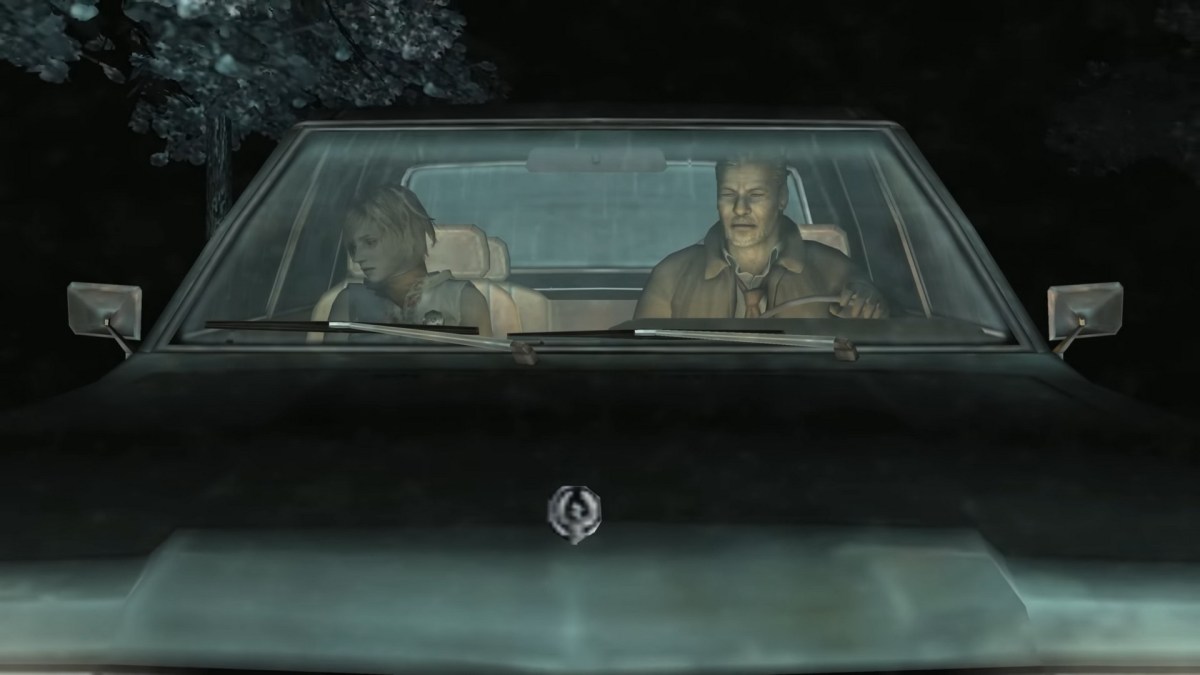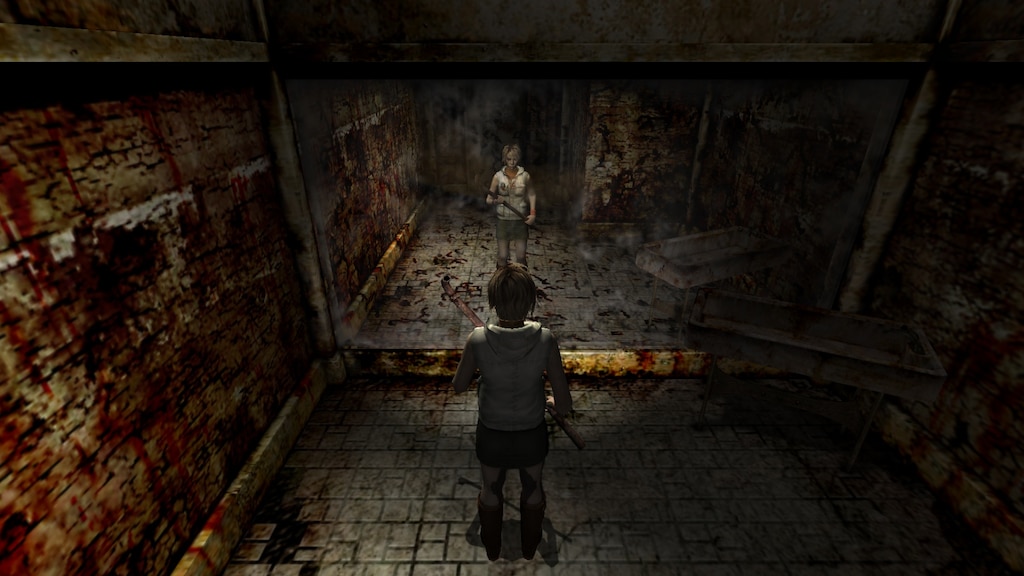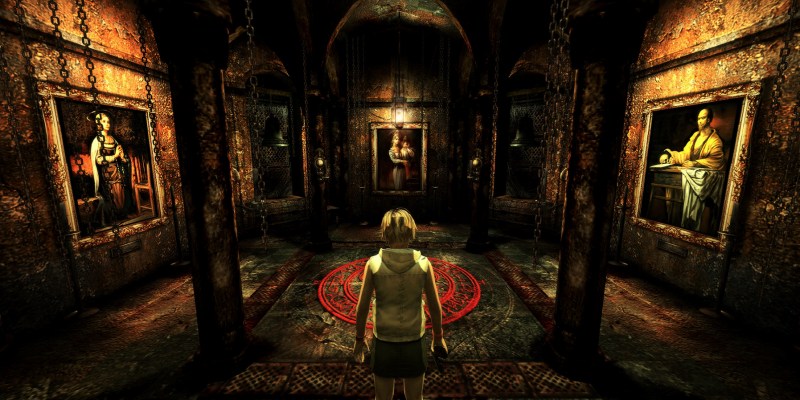20 years ago on August 5th, 2003, Silent Hill 3 released on the PlayStation 2 and continued what was, at the time, probably the most critically praised horror series in video games. While Resident Evil was indeed entertaining, had a handful of truly excellent installments, and sold much more than Konami’s little horror experiment, Silent Hill was the horror franchise you went to if you wanted to be unsettled, terrified, and anxious. It’s developed a cult following since then and while some of the later installments have varied wildly in terms of quality, there is no denying that the four entries developed by Team Silent are all classics in their own special way.
Using the concept of a town infected by some form of darkness to pass judgment on the characters within it, each game takes a different approach and feels fundamentally different from the others in the series. Silent Hill 3 is unique insomuch as most of the game actually doesn’t take place in the town of Silent Hill. It takes place in areas where the town’s influence shouldn’t reach, yet our protagonist Heather is still stuck dealing with horrifying phallic monsters, dogs, giant twitching abominations, and, of course, bread.
To this day, I don’t think that many fans will question if Silent Hill 3 is or is not scary. It most assuredly is, and it’s arguably the scariest game in the franchise — a title that is very hard to claim given its peers. There are moments that still haunt me to this day that I can’t help but fall in love with. However, I question whether or not getting to those moments is actually worth it. Silent Hill 3 is also a game that is terrifying to play, not because of outdated control methods and camera systems, but because of the inherent changes in design philosophy, the challenge it presents, and how the actual game portions never click together as seamlessly as they could have.
Silent Hill 3 makes a wonderful first impression. Once you’ve gained control of Heather, you find yourself in an abandoned amusement park with a strange pink rabbit mascot watching you, motionless on a bench. Suddenly, monsters are attacking you and you have no idea what to do. You run around, maybe fight them, but you have no idea what is even happening or why they’re attacking you. With no direction, you may die to the creatures. Or you may run away, but if you do you’ll end up on a roller coaster track, with a ride careening towards you and killing you.
At this point, you wake up in a shopping mall restaurant, being tailed by a suspicious private eye and a bizarre religious fanatic. As you evade them both through the mall’s back rooms, the world slowly distorts around you, importing the creatures of your nightmares. And that’s only the beginning of your strange descent into madness.
Something that Silent Hill 3 excels at is keeping you in the dark. While the first two games had very clear goals associated with them, the real goal of Silent Hill 3 is kept close to the chest. We’re not rescuing our daughter or finding our wife. At first, Heather wants to go home, but we know from those two early encounters in the mall that there’s more going on than we’re aware of — but the game willingly hides it from you. In both Silent Hill and Silent Hill 2, the inherent goal of the characters doesn’t change, despite knowing the situation Harry and James respectively are in. Heather, though, develops and evolves as a character alongside the plot and upon learning what her relationship is to the chaos happening around her. We’re reacting alongside her to a stream of new information and how it fits within the wider context of the Silent Hill universe.
And in that journey, of course, the scares the franchise is known for are spawned from the psyches of the characters that we encounter. Or rather, that’s how it should be, but Silent Hill 3 subverts that. While yes, there is a ton of symbolism present in Silent Hill 3 that influences the relationship between Heather, cult leader Claudia, detective Douglas, Heather’s father Harry, and everyone’s favorite creepy boy, Vincent, the best scares have nothing to do with any deep interpretation of the narrative. They’re just meant to be scary. The game just wants to terrify you and will generate an atmosphere of emptiness and isolation to do so.

According to the series’ creature designer Masahiro Ito, some of the monsters were designed just to be scary creatures with no real meaning in Silent Hill 3. Monsters like Pendulum, Glutton, and Numb Body have no agreed-upon interpretation or any auteur comments confirming their symbolic representations or how they relate to the game’s themes of maternity and motherhood, religion, adolescence, and identity. They’re just scary monsters that will make you crap yourself when you enter a room and see them standing motionless at the end of a hallway.
But even then, plenty of rooms and areas of the game are designed just with the sole purpose to scare you. Whether it be the ghosts on the subway, the Mannequin Room, or the Samael-forsaken light chasing you in the Borley Haunted Mansion, Silent Hill 3 oftentimes disregards what is expected of a Silent Hill game and reaches something much more visceral. I think I speak for everyone when I mention the sheer terror I faced when I entered the Mirror Room for the first time and slowly felt fear engulf me when I realized that there was no escape. The game completely disregards its established mechanics and rules just to make you scream and I love it. Or maybe you want to think about one of the most debated theories in the Silent Hill franchise when Vincent questions the nature of the game’s reality itself. No matter how you slice it, Silent Hill 3 still manages to unnerve and scare me in a way no other game can.
But that’s that sad part about Silent Hill 3. As I was writing this, I wanted to do nothing more than start up Silent Hill 3 again and experience that terror fresh. But then I remembered I would actually have to play the game again and my interest depleted. Silent Hill 3 is both similar and wildly different from the games that came before it. In those games, environments seemed imposing but were actually tight and compact. You wouldn’t wander around aimlessly trying to find your way to the next area. Enemies may attack you, but they were always in limited numbers and were manageable, putting an emphasis on the survival elements of survival horror. Silent Hill 3 disregards those bits in favor of excess.

The levels in Silent Hill 3 are overly long and tedious to explore. All of this is evident in the very first area of the game, the mall. In it, there are numerous identical hallways to navigate through, with wide open rooms and plazas to avoid a seemingly endless horde of enemies. Like previous games, there’s resource management, but in a way that feels poorly thought out. In this entry the enemies all come across as damage sponges, and when the game throws you into a room with five of the same dogs that take nearly half a dozen bullets each to put down, you often decide to run from combat. But it isn’t like in the first two games where you ran because you wanted to conserve your ammo for more difficult encounters. In Silent Hill 3, you run because it is mathematically impossible to defeat the enemies with the ammo and supplies the game gives you. The game almost expects you to spend your resources willy-nilly just to survive, but does not actually give you the resources to do so.
Combat is often discouraged in Silent Hill 3, even if you are playing on medium action difficulty. The number of enemies is overwhelming and when the environments are as large and spacious as they are, it doesn’t create a sense of isolation like in any of the games before it. It instead makes you bored as you have to wander these hallways and just figure out where you need to go on a map that is three floors of confusion. Later levels aren’t any better, with the next level, the subway, being even more spacious and harder to navigate. Because of this, Silent Hill 3 may make a great first impression, but the immediate hours after that are anything but flattering.
Things do improve when you get to the town itself at the two-thirds mark, but even then some of those environments are recycled from Silent Hill 2. But the game’s best scares are in those parts too! And I still love that there are two separate difficulties for puzzles and combat. I’m conflicted because, at points, I would rather play any other game in the series than this one due to just how poorly designed certain sections are. But then I think of how brilliant and terrifying the game can be and I’m back to singing its praises. It’s a tough balancing act to follow and Silent Hill 3 stumbles more than any of the Team Silent games. Even Silent Hill 4, for all of its departures, is a more consistently enjoyable game that balances its gameplay mechanics and scares nicely, and people unfairly rag on that game all of the time.
In a perfect world, I would much rather see Bloober Team do a remake of Silent Hill 3 than of Silent Hill 2. Yes, Silent Hill 2 works better as a standalone title and is the better of the two games, but I think that Silent Hill 3 can use some significant rebalancing and redesigning. There’s no real reason to mess with Silent Hill 2 and lord knows plenty of Silent Hill fans are already heavily resistant to anyone touching Silent Hill 2, made even worse by Bloober Team’s spotty track record. But Silent Hill 3 deserves more love. It deserves a chance to reach its full potential and iron out many of the kinks from the original release. If the combat and level design was able to match the quality of the story and scares, then maybe Silent Hill 3 would be the masterpiece that everyone talks about instead of Silent Hill 2.
